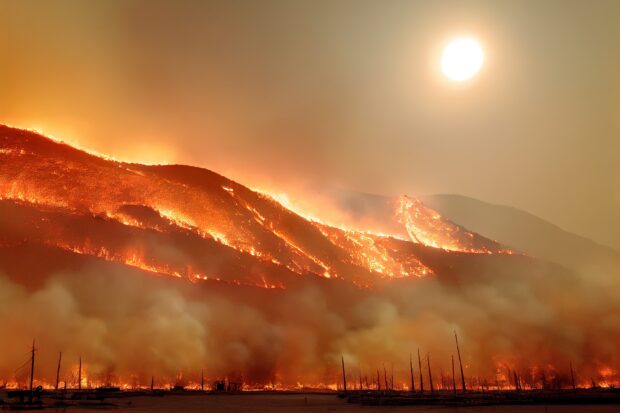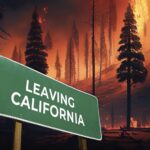While I was doing research for this edition, I came across these paragraphs, written by one of the leaders of a technology company, recalling a previous role he had working in disaster relief.
After a few days, most people were no longer in immediate harm of losing their lives, and I watched the news cycle move on and the donations slow down. But those people whose homes, businesses, and livelihoods were destroyed were still suffering. I realized a second truth: what was left after the news cycle moved on were those people directly affected, and their insurance companies.
While there is immense suffering in the aftermath of a crisis, there’s also a long tail of suffering during the months and years it takes to rebuild. And the suffering during the long tail is just as big, if not bigger, than what happens in the hours and days after a crisis hits.
The words were written by Nathaniel Manning, COO of Kettle, in an online article, “How I Came to Start a Reinsurance Company to Help People Hurt by Climate Change,” posted on Medium. Kettle is an insurance and reinsurance MGA using machine learning to understand and price wildfire risk, which is profiled in this edition.
The sentences about the “second truth” and the “long tail” stuck with me, partly because “long-tail” is also a part of the jargon of the insurance industry. But mostly, it is because Manning puts insurance companies and homeowners together—recognizing that both are impacted in the aftermath of disaster. Right now, in California, it’s undeniable that both are struggling with the aftermath of impacts of wildfires and insurance regulations leaving them all in a place they don’t want to be—not a disaster claims effort but an insurance market crisis.
The palpable sense of desperation on both sides was apparent during a four-hour workshop in July, during which the California Department of Insurance asked interested parties to weigh in on the use of catastrophe models in ratemaking and required public disclosure of model information. For sure, the intricacies of how to make that happen were discussed. But more memorable testimony went in other directions.
“Has anybody addressed the issue now at this point of getting insurance?” a distressed insurance agent said, reporting that she had to miss some testimony to help a customer with no available coverage options. Even a client living in a “concrete city” saw a premium spike from $2,000 to $4,000, while a more wildfire-exposed customer saw a fourfold jump to five-digit premium.
“CSAA wants to continue to write California customers, but no company can offer products that lose money over the long run because the company will simply cease to exist,” said an executive of that insurance company, describing a regulatory decision to lower a wildfire cat load by $20 million in spite of following department guidelines.
“Right now we are dealing with an insurance crisis on the condominium side. The price of insurance has gone up as much as 6,900 percent because the admitted market has stepped out of the picture,” a representative of a builder’s group said. “Our customers, the home buyers, are basically seeing their insurance rates go from $250 a month to $1,500 a month through their homeowners association dues.”
“If carriers [were] here to take advantage of our need for their services, then State Farm would’ve stayed in this state. As would have Allstate,” another agent said, replying to rhetoric from consumer advocates suggesting that insurers were engaging in “economic blackmail” to force deregulation and the use of “black-box models.”
In an interview for Carrier Management, Manning refers to insurance as “this beautiful thing,” describing the pooling of risk that is the essence of insurance—communities of insureds and insurance companies solving risk problems together.
The first truth, referenced in his Medium article, is the fact that efforts to stop the progression of climate change have failed. It’s no longer fixable.
But an insurance market crisis? That’s got to be fixable. During the weeks I spent putting together this issue, I heard and read about fixes that include community-based mitigation, a CEA for wildfire, a government-backed cat perils policy form, adding the cost of reinsurance into California rates, allowing third-party cat model review (à la the Florida Commission on Hurricane Loss Projection Methodology), using a public model, a cat model clearinghouse…I know I have missed some.
It seems fixable. But the fixes can’t have a long tail. The need is immediate for California consumers and their insurers.
Staring at orange skies through my window in Queens, N.Y., when I started planning this edition, I realized that there is no place safe from climate-driven perils. And for insurers and regulators, there is no aspect of this business that won’t be improved by technology. So, there has to be a meeting of the minds on opening up black boxes across the nation, too.
***
This opening note from Carrier Management’s third-quarter magazine, “California Insurance Market in Crisis,” introduces feature articles about regulatory and legislative actions underway—and being considered—to deal with availability and affordability issues in the state. Also featured are technology companies, ZestyAI and Kettle, offering different approaches to assessing wildfire risk for insurance and reinsurance underwriting.
Articles include:
- Are Winds of Change Blowing on California Insurance Law?
- California Wildfires Dwindle as Premiums Surge
- A Community-Based Solution: How Actuaries and Fire Chiefs Can Tackle WUI Risk Together
- Grid-by-Grid: How One Tech Firm Dissects California Wildfire Risk to Sell Insurance and Reinsurance
All of the articles in the magazine are available on the magazine page of our website.
Click the “Download Magazine” button for a free PDF of the entire magazine.
To be able to read and share individual articles more easily, consider becoming a Carrier Management member to unlock everything.





















 Market Softening Accelerates During 1/1/2026 Re Renewals
Market Softening Accelerates During 1/1/2026 Re Renewals  Good Times for U.S. P/C Insurers May Not Last; Auto Challenges Ahead
Good Times for U.S. P/C Insurers May Not Last; Auto Challenges Ahead  NOAA Announces Latest AI-Driven Global Weather Models
NOAA Announces Latest AI-Driven Global Weather Models  California Workers Comp Combined Ratio for 2024 Highest in 20-Plus Years
California Workers Comp Combined Ratio for 2024 Highest in 20-Plus Years 











